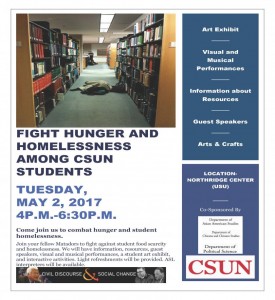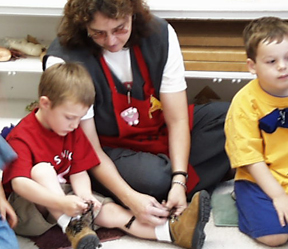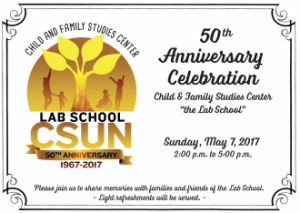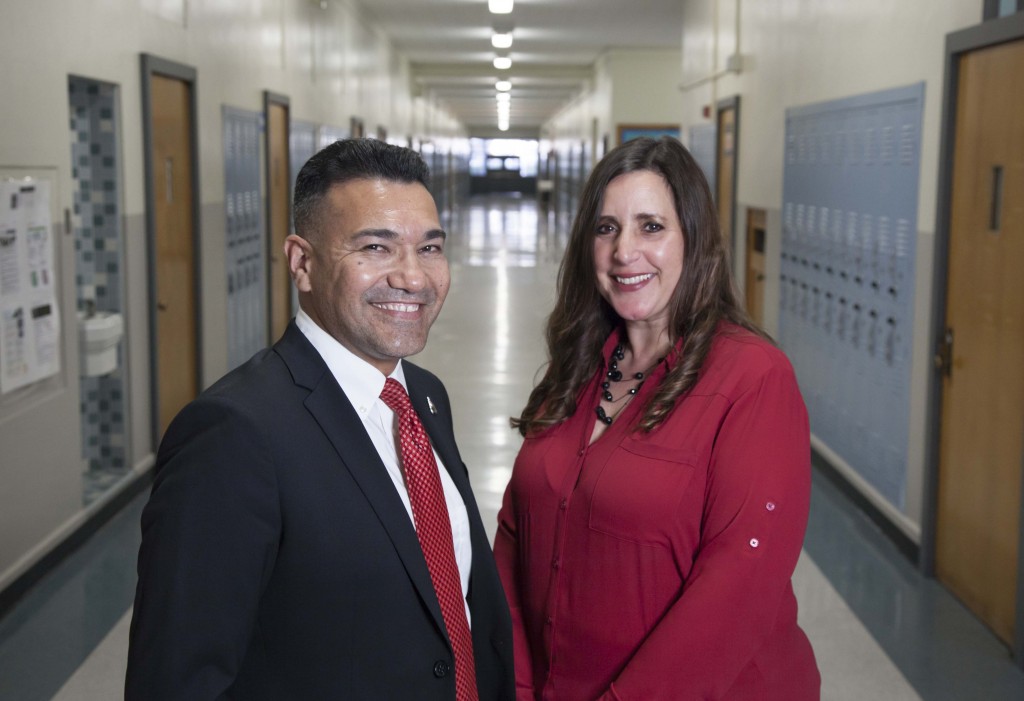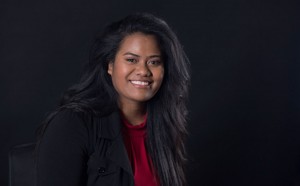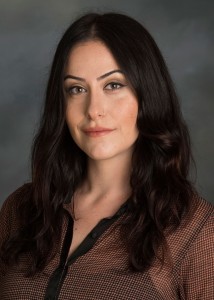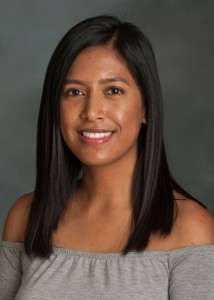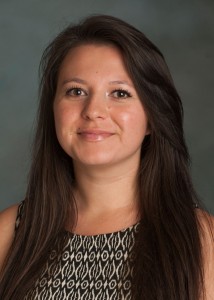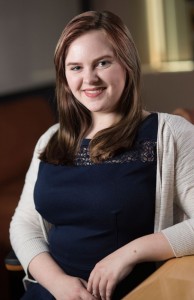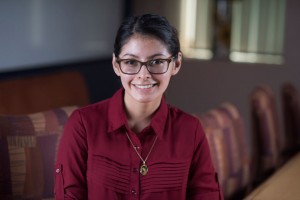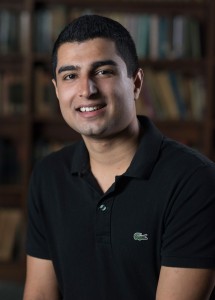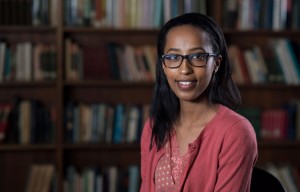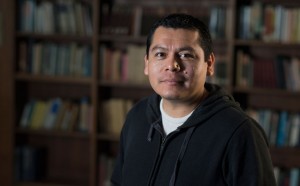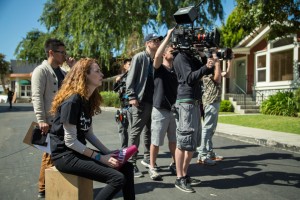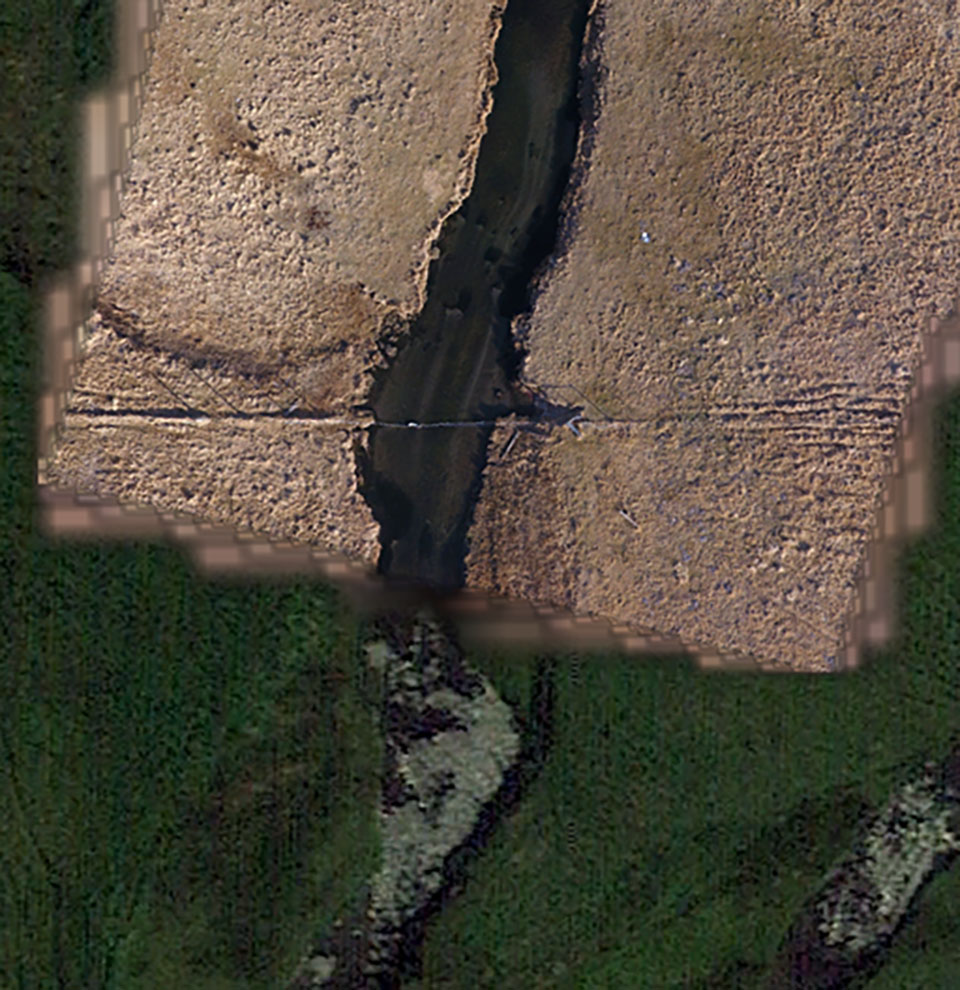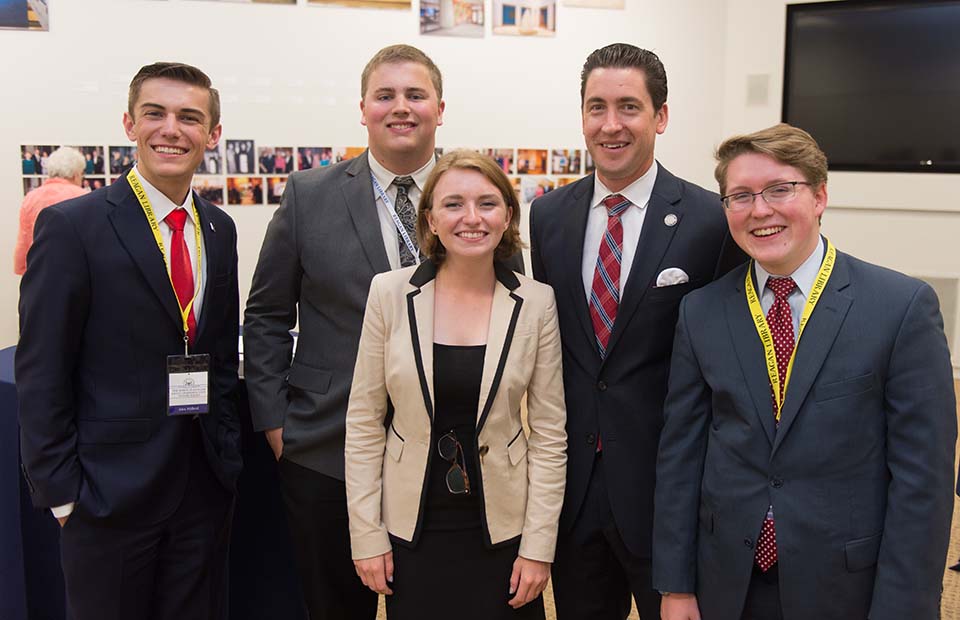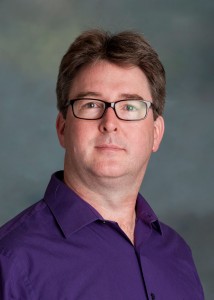![]()
It took a lot of hard work, late nights in the library, mastering of complicated schedules, seemingly endless papers and projects, and the understanding and support of loved ones. The payoff begins this weekend with California State University, Northridge’s 2017 commencement.
Nearly 11,500 CSUN students have been invited to walk across the stage in front of the Delmar T. Oviatt Library in the heart of the university campus and receive congratulations from university leaders as they celebrate their graduation to the cheers of thousands of family members, friends and fellow classmates. (CSUN’s 2017 commencement ceremonies can be watch live online at www.youtube.com/CalStateNorthridge.)
Some of the students are the first in their families to get a college education. Others veered from paths initially laid out by their parents and instead are inspired by their own dreams. Still other students are completing a journey started years earlier, but interrupted by jobs and familial obligations.
Below are some of those students’ stories:
![Kaitlyn Amodeo]()
Kaitlyn Amodeo
Kaitlyn Amodeo, B.S. Geophysics
Not long ago, Kaitlyn Amodeo, 22, of Simi Valley, was sitting on a plane, reading research papers about newly discovered planets, when the man sitting next to her interrupted her to ask, “What’s a young lady like you reading about planets for?”
Amodeo told him that she was a geophysics student, “and I don’t think it’s weird to read about planets.” Impressed, the man, who turned out to be a geologist, admitted he had never met a lady geophysicist before.
Amodeo, a CSUN Presidential Scholar, said the number of women going into science, engineering, technology and math (STEM) fields are still too low, but she hopes that changes — and she plans to be part of that change.
“We’re told as little girls that guys are better at math and science, and girls are better at history, art and English,” she said. “So, a lot of girls grow up to think that they are bad at science and math. I know I started to, but I got lucky in the sense that I was bad at [science and math] but I still liked what I was doing, so it was all good. I would like to tell young girls that just because they think that they can’t do something, it does not mean that they can’t.”
Amodeo discovered her love for Earth science while in sixth grade.
“I had been doing badly in the class, then we started talking about earthquakes and [I] was very, very interested,” she said. “I went from a ‘C’ student to getting perfect grades.”
Her science classes in high school continued to fuel and shape her passion so that by the time she got to CSUN, she knew she wanted to study geophysics.
During her time here, Amodeo was one of only a couple of undergraduates to work on a joint research project by scientists at CSUN, UCLA and the California Institute of Technology comparing oceanic and continental subsurface features. Their research could have implications for assessing seismic hazards in Southern California.
“It’s definitely not easy research, but it is rewarding in the sense that it can help people, and it is able to advance science where it hasn’t gone before,” she said.
When she leaves CSUN, she will be heading to a fully funded doctoral program at UC Davis to study planetary science, a field she discovered with a little help from Wikipedia.
“I don’t know why, but one day I was on the Wikipedia page for geology, and it lists all the subdivisions of the field, including planetary science,” she said. “I knew that was it. I’ve always been fascinated by the planets and seriously considered switching to astrophysics at CSUN.”
Planetary science, she said, is the perfect marriage between her love of space and her passion for Earth science.
Amodeo will take part in the College of Science and Mathematics commencement ceremony scheduled at 8 a.m. on Monday, May 22.
![Jessica Barajas]()
Jessica Barajas
Jessica Barajas, B.S. Health Administration
CSUN seemed like a natural college choice for Jessica Barajas, 22, of Tujunga. Her cousins had attended the university and raved about their experience and the education they got. With plans to go on to medical school after her undergraduate studies, she felt the price couldn’t be beat.
“It seemed perfect,” Barajas said.
Wavering between kinesiology and biology, Barajas settled on biology, saying it fit better with her medical school goals. “I had dreams of becoming an optometrist, maybe an eye surgeon,” she said.
Her plans changed after a visit to a retina specialist in the middle of her freshman year. Barajas, who had been having problems with her eyesight for a couple of years, was convinced by her older sister, who also was having problems, to visit a specialist to find out what was wrong.
“We have Stargardt disease, a form of macular degeneration, which means that our vision will continue to get progressively worse and it could mean complete vision loss,” she said.
Barajas said her first thoughts turned to her academics, and her dream of becoming an optometrist. Concerned about her future, she talked to faculty members and the staff in CSUN’s Disability Resources and Educational Services, which offers support to students with disabilities. They pointed out that her failing eyesight may preclude her from becoming an eye surgeon, but it did not prevent her from a career in health care.
“What I loved is that when I felt most vulnerable, when I needed help the most, [people at CSUN] were there for me,” Barajas said.
Encouraged, Barajas switched her major to health administration and discovered a new passion. An internship shadowing the chief medical officer at Providence Hospital this year cemented her decision.
“I never realized how much collaboration there was in health administration, how much they work with the doctors and the patients,” she said. “The person I am shadowing probably knows the names of more people than I have known in my entire life.”
Her new major also has forced her out of her shell. “I am kind of a shy person,” she said, “but this field is very collaborative, and working with my classmates has made me more social.”
Barajas said she plans to work in health care upon graduation, and then go to graduate school.
“I want to get a little real-world experience under my belt before going on to get my master’s degrees in public health and health administration,” she said, adding that she would eventually like to earn a doctorate and return to the classroom as a university professor.
Barajas will take part in the College of Health and Human Development commencement ceremony at 8 a.m. on Saturday, May 20.
![Jessica Barajas]()
Joveen Grewal
Joveen Grewal, B.S. Accountancy and Business Honors
There were days during his junior year that Joveen Grewal, 21, of Reseda, didn’t think he would make it. His face was covered with black scars, the skin was peeling off the back of his neck, his nose was constantly bleeding and his hair was falling out in patches. He was emotionally and physically exhausted from the effects of radiation treatment for stage 2 adenoid cystic carcinoma, a rare form of cancer in the nervous system.
“The moment they told me [I had cancer], I shut off my ears and broke down inside,” Grewal said. “I kept thinking, ‘I am 19 years old. Why do I have cancer? Why is this happening to me?’ I don’t smoke. I rarely drink. I don’t have any vices in life, and here I am being told I have cancer. I remember asking my doctor later on, ‘How did I get this?’ And he said, ‘Bad luck.’”
But Grewal wasn’t going to let “bad luck” get in the way of his dreams of getting an education and entering the world of finance and accounting. With the support of his family, understanding faculty and staff in the David Nazarian College of Business and Economics and an “angel” of a girlfriend, he made it through his junior year with his cancer in remission, a 4.0 GPA and a job offer upon graduation from the international accounting firm Ernst & Young, where he had been interning.
Grewal said the experience taught him “not to stress about the little things in life, but to enjoy each day as it comes because you never know what might happen.”
He entered CSUN four years ago with the goal of fulfilling his immigrant parents’ dreams of him becoming an engineer. Despite his success in his mechanical engineering classes — he was even selected by classmates much older than him to be their group leader — he realized that engineering wasn’t for him and switched to business.
Both his parents work for the U.S. Postal Service and are of Indian descent, though his father was born and raised in Singapore and his mother was born and raised in the Philippines.
“They sacrificed so much to come here, and to give me the opportunities the United States has to offer and to go to college. I knew that if I made the switch [in majors], I would have to prove myself and be successful at it,” he said.
He flirted first with majoring in finance, but found there were more opportunities for his interests in accountancy and business honors. He excelled in his classes from the start. During his first year in the Nazarian College, Grewal and two classmates entered the program’s annual Case Competition, in which student teams from the Business Honors Program complete real-world case studies.
“We knew we were the underdogs, that everyone expected us to be eliminated in the first round,” he said. “But we put in long hours and hard work, and we came out champions.”
The trio donated half their prize money, $8,000, back to the Business Honors Association —a gesture, he said, that was a heartfelt “thank you” for all that the program had taught them to that point and what they knew they would continue to learn.
“I am so grateful for the opportunities I’ve had at CSUN,” he said. “It’s one of the best experiences in my entire life. Some of my friends at other schools are coming out with thousands of dollars in debt and no job after graduation. Here I am, with zero debt and an amazing job at an amazing company, and able to start my life off on the right foot with an amazing perspective on life. I don’t think I would have gotten that at any other school.”
Grewal will be spending the summer studying for the CPA exam before starting his job in Ernst & Young’s finance division in August. He will take part in the David Nazarian College of Business and Economics commencement ceremony scheduled for 8 a.m. on Friday, May 19.
![Yuliya Meskela]()
Yuliya Meskela
Yuliya Meskela, B.A. Economics, B.S. Business Honors, with a minor in Finance
International student Yuliya Meskela, 23, is grateful for her time at CSUN, in particular for the opportunities the university has provided as well as the support from faculty.
When she first came to the United States to study at Chaminade College Preparatory High School in West Hills as a high schooler, she wasn’t sure what to expect. The native Ethiopian’s exposure to American culture was mostly through the movies.
“I was only 14 at the time, and I kind of thought it would be like ‘Mean Girls,’” she said, referring to the American teen comedy film about an A-list high school clique.
While the language — she spoke Amharic — and culture took a while to get used to, Meskela said her host families and her classmates were welcoming and understanding.
The opportunity to study in the U.S. came through her father. Concerned that large corporations were taking advantage of Ethiopia’s coffee growers, he organized the country’s first coffee growers’ union and pioneered the export of Ethiopia’s fair-trade coffee. Fair-trade coffee is coffee that is certified as having been produced to a variety of standards that ensure the coffee farmers are treated fairly and compensated fairly for their product. His work caught the attention of Chaminade officials, who offered to host one of his children to study at their school.
Meskela said her father’s efforts to organize the coffee growers’ union, despite intimidation and threats, inspired her to remain in the U.S. to continue her education after high school. Eager to learn, she took a variety of courses at Pierce College in Woodland Hills. It was there that she discovered the world of finance and economics.
“You understand the world better through finance and economics,” she said. “It was like I got a new pair of glasses that I can see the world through.”
She transferred to CSUN in 2015 and dove into her classes. She also landed a job working in the dean’s office for the College of Health and Human Development.
Meskela said she never considered returning to Ethiopia to finish her education.
“While the colleges there are not bad,” she said, “here at CSUN there are so many resources to support students and professors who are willing to look past their authority to ensure that you have what you need to succeed. They care about how you are doing beyond the classroom. I don’t know if students realize just how many resources are available to them at CSUN. I feel lucky to have had the opportunity to come to CSUN and take advantage of these resources.”
Meskela said she hopes to attend graduate school in the fall and someday earn a doctorate in economics. Once she finishes her education, she plans to return to Ethiopia and create work and professional opportunities for women and other people who are disadvantaged.
“It’s going to be hard to go back home,” she said. “I am not naïve. I know there will be some challenges, but I believe that it is possible. I know that if I stay here, there are opportunities for me in this country. But people my age are the future of Ethiopia, and if we don’t go back and try to change things for the better, who will?”
She will take part in the Nazarian College’s commencement ceremony scheduled for 8 a.m. on Friday, May 19.
![Juan Pilar]()
Juan Pilar
Juan Pilar, B.S. Mathematics
When Juan Pilar, 35, of Santa Clarita, decided to return to school, he knew the move would be hard. He had spent more than a decade in the workforce, but he wanted to have a greater impact on people’s lives than he did as a manager of a CVS Pharmacy.
“I liked my job, but I wasn’t passionate about it,” he said. “I decided that I was going to go back to school to pursue something I really am passionate about.”
Pilar, who came to the United States from Mexico with his parents when he was four years old, wants to teach; specifically, he wants to teach math to high schoolers.
“I’ve always loved math; it’s always been one of my favorite subjects,” he said. “Working at CVS and at other jobs, I realized that the part I enjoyed most was teaching and training others. That is what I am passionate about — math and teaching.”
Pilar, who became a U.S. citizen two years ago, said he hopes to one day teach students who were like him in high school — kind of lost on the margins.
“Regardless of where the high school is, there are always kids who feel like they don’t belong — whether they are immigrants like I was, or racial minorities and females, who many times, feel that they don’t belong in a STEM classroom,” he said. “I want to help them feel that they belong, and that math can be fun. Understanding math is essential in understanding what goes on around us, and it doesn’t have to be boring to learn.”
Pilar earned his associate’s degree in biological and physical science, with honors, from the College of the Canyons in 2006, so he was able to enroll at CSUN in 2015 with about half of his requirements already completed. Aware that he wanted to finish his degree as quickly as possible, Pilar quit his job with CVS, gave up his apartment and rented a room from his brother to ensure that his savings stretched enough to cover the cost of his education.
Once at CSUN, Pilar threw himself into his coursework. His dedication attracted the attention of faculty in the Department of Mathematics, and the National Science Foundation, which last year awarded him a prestigious Noyce Scholarship, given to math students who have indicated the desire to teach. While at CSUN, Pilar has been invited to teach supplemental math classes and currently is helping a graduate student teach an experimental calculus lab. The lab is designed to help students majoring in the sciences understand calculus as it applies to their chosen fields of study.
Pilar will take part the College of Science and Mathematics commencement ceremony at 8 a.m. on Monday, May 22. He will begin CSUN’s teaching credential program in the fall.


